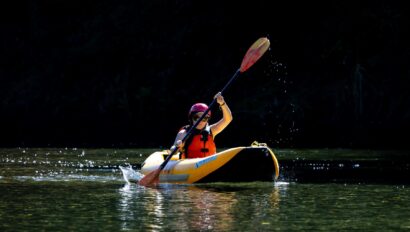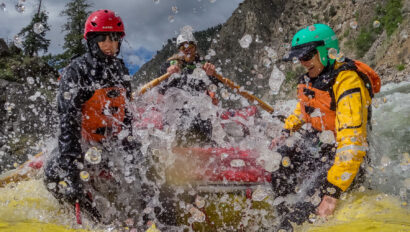The Urban Adventurers Guide to Storing Outdoor Gear
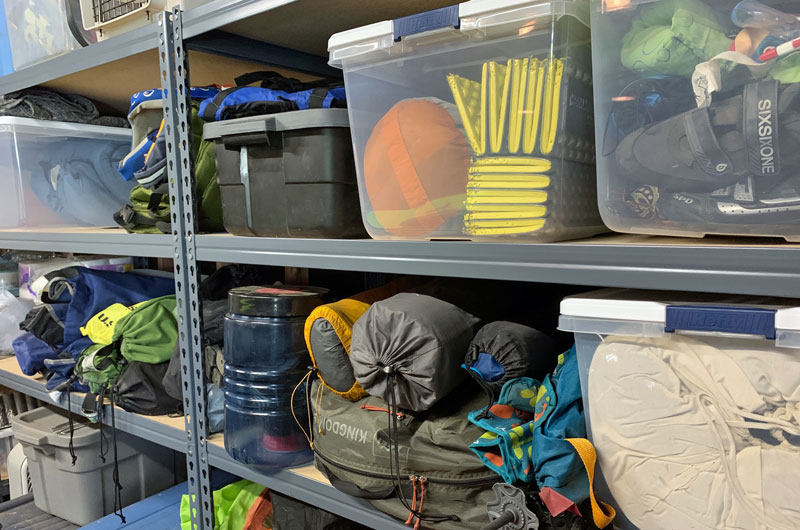

You’ve just discovered your new favorite activity or you’ve been slowly acquiring outdoor gear over time. But now you’re faced with a problem; where to put it all. The assumption here is that you don’t have the square footage for the gear garage you’ve seen on Pinterest or Instagram, so let’s dive into a few tips and tricks for storing outdoor gear in the space you have.
Tips for Storing Outdoor Gear in Small Spaces
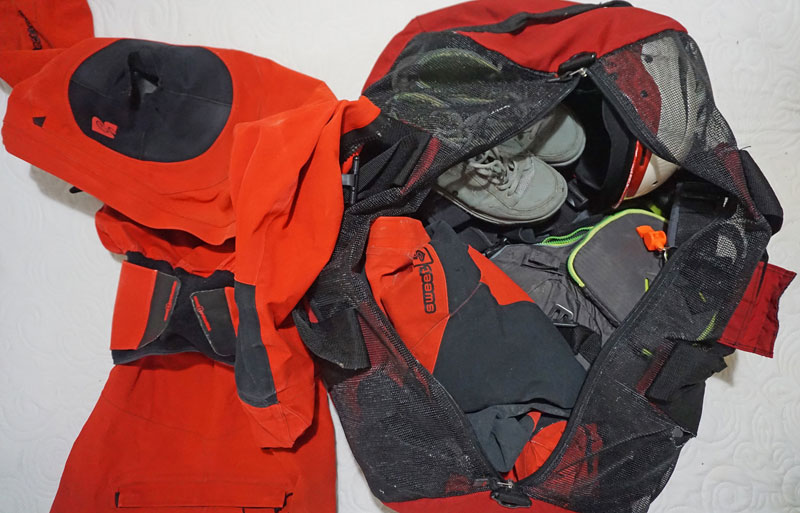
First and foremost try to only have gear you will be using regularly. When you don’t have a lot of space having unused gear gets messy quickly. Secondly, when purchasing gear try to acquire items that have uses across multiple types of recreation.
Buy the shell jacket and lightweight puffy instead of the parka if you think you’ll spend equal time hiking and skiing. Buy the brighter colored jacket if you think you’ll also spend a lot of time walking, running or riding in the city and are worried about visibility. Right there you have two items that cover three or four modes of recreation.
Storage
Dedicate a space to your gear if you can. That can be a corner of the closet, storage room, or area of the apartment that is specifically for storing, cleaning and drying your gear. If you can’t do this, choosing several areas where items fit best is another good option. Make sure that gear is labeled and consolidated before putting it away in its place if it is not all going to live together.
Adjustable wire racks are a great storage solution. Big box retailers carry a variety of this rack in their storage and home improvement sections. Adding 16-gallon storage totes
(or the size that works best for your space) will allow you to store almost any gear you can acquire. If you don’t like the look of plastic bins, milk crates, wooden crates or cardboard boxes also work. Pick your material based on what you will be storing and how it’s dried.
Pro tip: Keeping a headlamp easily accessible in your gear storage area will help when you need to find just one item.
Bins
Clear bins allow you to see what gear you have without removing it from the shelf. If the bins are going to go with you at times, invest in more durable, flexible bins as repeated drops may cause cracking in the clear bins. Storing gear in a long flat bin under your bed or couch is also a great option.
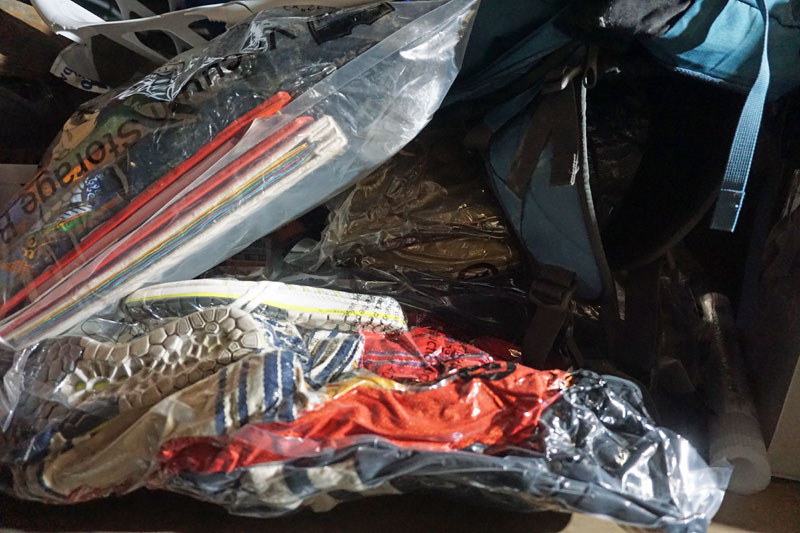
Bags
Keeping gear ready to go in a dedicated gear bag is another space-saving hack. For example:
- Climbers can use their rope bag to store harnesses, shoes, and associated gear.
- A 20-30L backpack can hold a lot of gear when it’s not being used for a day trip.
- A gym bag can hold all your cycling or mountain biking gear.
- For boots, gloves, and smaller items, a closet or door hanging shoe rack can help you keep these organized.
Additionally, there are fabric and mesh gear bags from most major outdoor recreation gear manufacturers that serve this purpose very well.
Pro tip: When gear is not going to be used for a prolonged period of time, investing in a hand pump vacuum sealer can save you space. There are many options for cheap garment-sized vacuum sealers
online.
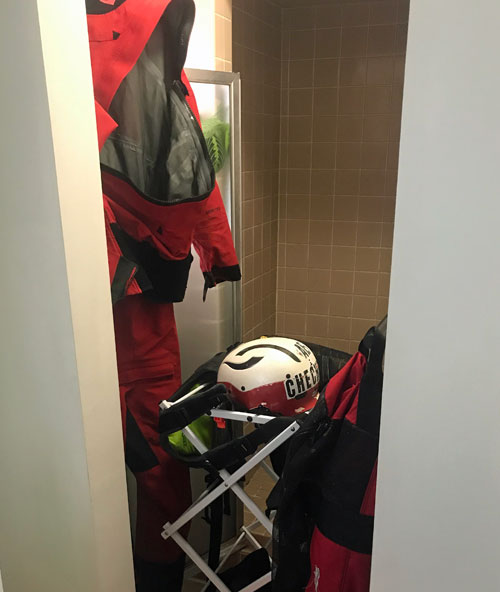
Drying and Cleaning: The Easy Way
When you don’t have an outdoor space or the elements aren’t in your favor, turn your bathroom into a drying space (if you don’t need to share it). Even if you can’t use the bathroom to create a drying space you can make due in a corner of the apartment/room.
Use a folding drying rack or larger coat rack
to dry your wet and dirty gear. These can easily fit under the couch or bed when not in use. Placing a tray or rubber mat underneath this soggy affair will save you some cleanup, as well.
If drying your gear inside, you’ll also want to invest in a box fan and a dehumidifier. The box fan will keep air circulating in the space while things dry or air out, and the dehumidifier will pull moisture from the air and surrounding objects.
Boot dryers are a must if you participate in any sport where your shoes or gloves are going to get reasonably soggy. Drying these items between uses will decrease odor and mildew buildup and keep your gear bin (and apartment) smelling better in the long run.
Pro-tip: Always dry your gear thoroughly before storing it. Gear, apparel, or tools should all be as clean and dry as possible before you store them. It will help prolong the life of your gear.
Put your gear away
Check for damage and wear when you hang your gear to dry or when you’re putting it away. Store gear the way you want to take it out again the next time you use it. Doing this means you always know the condition of your gear before you pack up for your next adventure. Another added bonus is only having to pack the little things before the next outing. Coil the rope, rack the cams, buckle the PFD straps, etc.
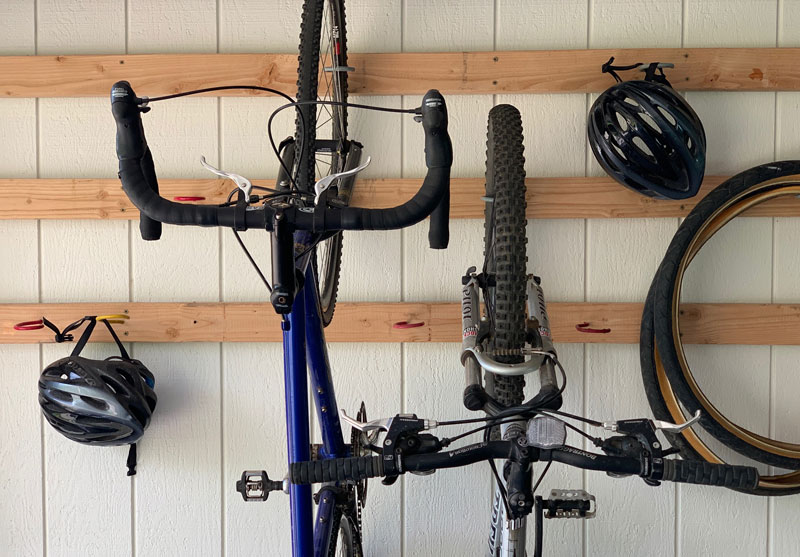
Storing Outdoor Gear: The big stuff
Larger toys like surfboards, whitewater and sea kayaks, and bicycles should be hosed off and left out to dry if you have a secure space. If not, an old towel can be used to give them a cursory dry before bringing them indoors.
For most of those items a wall-mounted rack can allow you to keep them indoors if you don’t have a protected space to store your larger gear outside the home. This can be accomplished by purchasing, or building, one of the many wall racks for bicycles, boards or boats. You can mount some of these options directly to the studs in your home’s walls, but be sure not to exceed weight limits. If you rent, or don’t want to drill holes into your walls, look for a free-standing option like this gravity rack for bikes.
What space-saving ideas do you use for storing outdoor gear and keeping it organized? Chime in below.
*PLEASE NOTE THAT SOME OF THE LINKS ABOVE ARE AFFILIATE LINKS, AND OARS WILL EARN A SMALL COMMISSION IF YOU DECIDE TO MAKE A PURCHASE AFTER CLICKING THROUGH THE LINK.
Related Posts
Sign up for Our Newsletter

